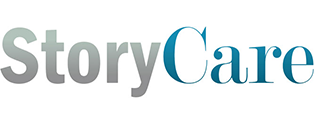Contributed by Richard Stone
There’s an old moniker that is accepted wisdom when it comes to presenting ideas to groups you’d like to convince to change: Tell Them, Tell Them What You Told Them, And Then Tell Them Again. Western cultures also have a tradition to moralize at the conclusion of fables—“therefore children, don’t ever go into those deep dark woods by yourselves because…” Inherent in both of these approaches is the belief that combining the story or the message with an admonishment will ensure that the listener will learn or change their behavior.
If such approaches were indeed truly effective, this would be a better world, and all healthcare leaders would have to do is tell their teams three times to adopt behaviors that keep patients safe, and like magic, all errors and disgruntled patients would evaporate. Unfortunately, such approaches don’t succeed despite the best of intentions. Why?
Native Americans have had millenia to learn about how to persuade people and how to deal with powerful forces of change that could upend their world in the breath of a moment. They came to understand that learning was the most important and valuable function to ensure the resilience of their people and the perpetuation of their culture. Interestingly, they had no word for teacher in the way we understand teaching. The closest translation for their terminology would be “enabler of learning.” Needless to say, they studied closely how people learned best. Before anyone in this world received an advanced degree in cognitive psychology, the Oneida people came to see that one of the most powerful tools available to a communicator to engage listeners in learning was a simple question, not an answer. As a result, they developed a tradition of learning stories that were meant to engender questions, not answer them. Raise issues, not resolve them. The most powerful question that they designed at the conclusion of a story is simple and elegant by design, yet more potent than any of us can imagine: What might we learn from this story?
When people come together to listen to a story who are challenged by serious issues related to keeping patients safe or satisfied, and then are asked what they might learn from the story without the teller directing their learning, something remarkable is unleashed—the creativity and engagement of every team member. By catalyzing the power of teams to make a difference in the spirit of learning, true transformation becomes possible, and perhaps, inevitable.
